1. Hōʻikeʻike
A plug valve is a quarter‑turn rotary valve that regulates flow by rotating a cylindrical or conical plug inside the valve body.
When the plug’s through‑bore aligns with inlet and outlet ports, fluid passes freely; a 90° rotation closes the port.
Modern plug valves—refined through advances in metallurgy, Machimen, and sealing technology—are essential in oil & aila, Kekau, Ke hana kino wai, and power‑generation industries.
2. What Is a Plug Valve?
A plug valve is a simple, robust quarter‑turn valve used to start, WALLOPu, or divert fluid flow in piping systems.
Ma kānaʻano, the valve consists of a hollow, cylindrical or tapered “plug” that sits within a matching cavity in the valve body.
When the plug’s internal passage (the bore) aligns with the pipeline ports, fluid flows freely; a 90° turn of the plug rotates the bore away from the ports, shutting off the flow.
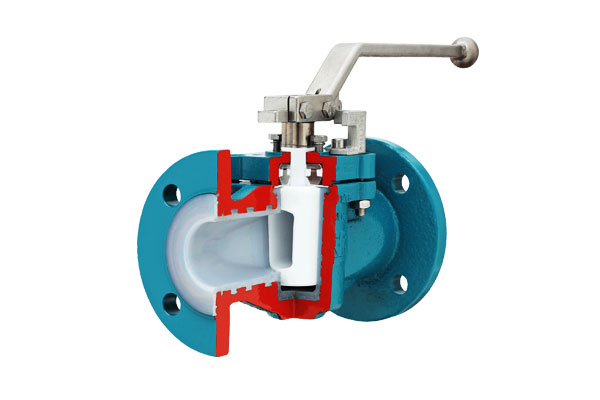
Key Nā'āpana Valve
- Kino: Houses the plug and provides inlet/outlet connections (flanged, threaded, or welded).
- Plug: The rotating element, shaped either as a straight cylinder or a cone, containing the port(S).
- Seats: Provide sealing between plug and body; can be metal-to-metal surfaces or resilient inserts (Ptfe, rubber).
- Kumu & Handle/Actuator: Transmits torque from the operator (lever, gearbox, pneumatic or electric actuator) to the plug.
Operating Principles
Rotary Flow Control
Plug valves operate by rotating the plug around its axis—requiring just a quarter turn for full open or full close.
This allows rapid actuation: typical manual operation takes less than one second, and automated pneumatic or electric actuators can complete the stroke in 0.5–2 seconds.
Seal Formation
- Metal‑to‑Metal Seals: The plug’s hardfaced surface (often coated with Stellite) directly contacts the body’s bore.
Under line pressure, the plug presses into the body, enhancing the seal.
These valves withstand temperatures up to 550 °C and high‑pressure applications (Ansi papa 600 and above), but require higher break‑away torque (100–500 Nm for DN 50–200 valves). - Resilient (Pepeki) Seats: Elastomeric or PTFE rings around the plug bore provide a conforming seal with minimal torque (10–50 Nm for DN 15–100 valves).
Soft‑seated plug valves achieve bubble‑tight shutoff per API 598 but are typically limited to temperatures below 200 °C and pressures under ANSI Class 300.
Torque Requirements & Actuation
Torque to operate a plug valve depends on size, seat type, and service conditions. As a rule of thumb:
- Soft‑seated DN 50 valves require ~15 Nm to open; soft‑seated DN 200 valves up to 60 Nm.
- Metal‑seated DN 50 valves may need 100 Nm; metal‑seated DN 200 valves up to 400 Nm.
Manual Actuation: Lever or handwheel, often with a gearbox for larger valves.
Pneumatic Actuation: Double‑acting or spring‑return cylinders for rapid, reliable quarter‑turn operation—cycle times <1 S.
Electric Actuation: Offers precise position control and feedback for integration with DCS/SCADA systems; typical stroke times of 2–5 s.
3. Types and Basic Designs of Plug Valve
Plug valve is engineered in various configurations to meet a wide range of process requirements.
Key design distinctions are based on lubrication method, plug geometry, port configuration, and internal flow path.
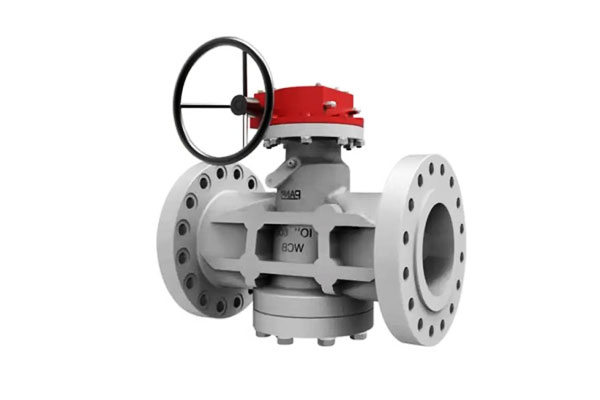
Lubricated vs. Non-Lubricated Plug Valves
- Lubricated Plug Valve
These valves rely on the injection of a sealant—typically a graphite- or PTFE-based compound—between the plug and the valve body.
The lubricant serves multiple roles: it reduces friction during operation, enhances sealing integrity, and provides a protective barrier against corrosive or abrasive media. - Non-Lubricated Plug Valve
These designs use self-lubricating materials—such as PTFE (Polytetrafluoroethylene) with glass fiber reinforcement—for the seat or employ hard-coated plugs (E.g., electroless nickel or hard chrome coatings with surface hardness > 60 Hrc) to minimize friction.
Plug Configurations: Cylindrical, Conical & Trunnion-Mounted
- Conical (Tapered) Plug
Featuring a taper that matches the valve body’s seat angle, conical plugs are self-aligning under line pressure, providing a more secure and leak-tight seal.
They are especially effective in high-pressure applications (≥2,500 psi / 172 Bar). - Cylindrical Plug
These plugs have parallel sides and rely on spring-loaded seats or resilient inserts to maintain contact.
Cylindrical configurations are better suited for low to moderate pressure systems and are often used in compact or low-cost valve designs. - Trunnion-Mounted Plug
In this design, the plug is guided by upper and lower trunnions, which reduce torque requirements and wear on sealing surfaces.
This structure is preferred for large-diameter valves (≥12″) or extremely high-pressure applications (a i 15,000 Psi / 1,034 Bar), such as subsea or high-integrity pressure protection systems (HIPPS).
Multi-Port Plug Valve
- Three-Way Plug Valve
Designed with L-shaped or T-shaped plug passages to divert flow between three ports.
Common in mixing, bypassing, or diverting services (E.g., blending hot and cold water streams, sampling systems, or line switching). - Four-Way Plug Valve
Include cross-shaped or double-L internal passages to reroute flow between two inlet-outlet pairs.
These are widely used in batch chemical operations and reactor feed alternation, allowing complex process sequences with minimal valve count.
Port Size Configurations: Full-Port vs. Reduced-Port
- Full-Port Plug Valve
The internal flow passage matches the diameter of the connecting pipeline (E.g., a 2-inch valve has a 2-inch port).
This design minimizes pressure drop and is essential where flow efficiency or pigging is critical.
Typical Cv for 2″ full-port plug valve: ~50. - Reduced-Port Plug Valve
The flow path is one nominal pipe size smaller than the inlet/outlet connections (E.g., a 2-inch valve with a 1.5-inch bore).
This design reduces material and manufacturing costs but introduces a higher pressure drop.
Typical Cv for 2″ reduced-port valve: ~30.
4. Materials and Construction of Plug Valve
The material selection and construction of a plug valve are critical to its performance, durability, and chemical compatibility in demanding industrial environments.
Each component—the body, plug, noho mau noho, and internal seals—is engineered using materials tailored to withstand specific pressures, mahana, and process media.

Kino & Plug Materials
| Waiwai | Standard/Grade | Key Properties | Nā noi maʻamau |
| Hae hao | ASTM A126 Class B | Ka waiwai, suitable for low-pressure systems; limited corrosion resistance | Water supply, Hvac, municipal systems |
| ʻAihue kīwī | Astm A216 WCB | High mechanical strength; suitable for medium-high pressure/temperature | Pono & aila, māhu, petrochemical pipelines |
| Kila kohu ʻole | ASTM A351 CF8/CF8M (316SS) | Ke kū'ē neiʻo Corrosion Corrossion, especially against chlorides and acids | Chemical plants, food/pharma, marine environments |
| Nickel alloys | Wikiwiki c-276, Actoel 625, Molol 400 | Superior resistance to aggressive chemicals and high temperatures | Acid handling, of 3Ikeha, gas scrubbing |
| Ui / Bronze | Astm A536 / ASTM B62 | Good mechanical properties with cost-effectiveness | Mahiai, wai wai, general plumbing |
Noho & Liner Materials
| Waiwai | Temp Range | Key Features | Recommended Services |
| Ptfe (Teflon) | –50°C to +230°C | Haʻahaʻa haʻahaʻa haʻahaʻa, excellent chemical inertness | Meaʻai, ʻO Pharma, corrosive chemical handling |
| Filled PTFE | –50°C to +260°C | Reinforced with glass or carbon for better wear and strength | High-cycle chemical systems |
| Elastomers (Epdm, FKM) | –30°C to +200°C | Good sealing flexibility, resistant to water, Kōlea, and light hydrocarbons | Ke hana kino wai, Hvac |
| Kiʻi kiʻi | –200°C to +540°C | High-temp resistance, fire-safe; used in critical sealing | Steam lines, Hoʻohui houʻia, high-temp pipelines |
| Metal-to-metal (Lealea, Chrome-Plated) | Up to 650°C | Hard sealing surface for erosive or abrasive fluids | Slurries, abrasive oils, fertilizer plants |
Lubricants (for Lubricated Plug Valves)
| Lubricant Type | Key Characteristics | Service Suitability |
| Graphite-Based Grease | Ke kū'ēʻana i ke kūlana kiʻekiʻe, haʻahaʻa haʻahaʻa haʻahaʻa | Māhu, heavy oil, refinery applications |
| Ptfe / MoS₂ Compounds | Low coefficient of friction, chemically inert | Corrosive gas, chemical feedlines |
| Silicone-Based Sealants | Neutral behavior, effective in a wide temperature range | Natural gas distribution, general service |
5. Performance Characteristics of Plug Valve
Plug valves are known for their simple operation, robust sealing, and bidirectional flow capabilities.
Akā naʻe,, their performance varies significantly based on design, koho koho, and service conditions.
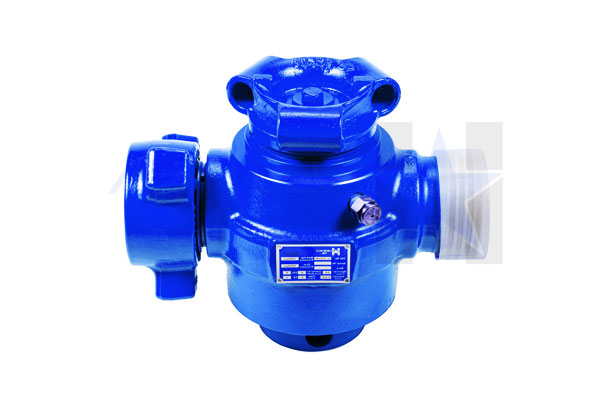
Pressure-Temperature Ratings
Plug valves are rated according to industry standards such as Kii 599 a Iso 17292, which define safe operating pressure limits at various temperatures.
These ratings depend heavily on the valve’s body material a seat design.
| Waiwai | ASME Class | Max Pressure (psig) | Max Temp (° C) |
| ʻAihue kīwī (Wcb) | 150 | ~285 @ 38°C | ~425°C |
| Kila kohu ʻole (Cf8m) | 300 | ~740 @ 38°C | ~540°C |
| Alloy (Actoel 625) | 600 | >1,480 @ 38°C | >650° C |
Seal Tightness & Leakage Classes
Plug valves, especially with soft seats or injected grease, can achieve bubble-tight shutoff. Leakage standards are tested per:
- Kii 598: Pressure test protocol for industrial valves
- Iso 5208: Valve leakage classification
- Leakage Class VI (soft seat): Essentially zero visible leakage
- Leakage Class IV (metal seat): Acceptable for most industrial gas and liquid services
Lubricated plug valves rely on grease to maintain seal integrity and require periodic re-injection, oiai non-lubricated versions use elastomer or PTFE sleeves that can wear over time.
Flow Characteristics (Cv Values)
Plug valves exhibit linear or equal-percent flow control behavior, depending on port geometry (round vs. rectangular or V-notch).
Though primarily used for isolation, some plug designs allow moderate throttling.
- Full-Port Plug Valve (2-loko):
-
- Cv ≈ 45–55 (high flow efficiency)
- Reduced-Port Plug Valve (2-loko):
-
- Cv ≈ 25–35 (higher pressure drop)
Cv (Ua lawa) represents the flow rate in gallons/minute of water at 60°F that will flow through the valve with a 1 spit stick drop.
Torque Requirements & Actuation
Plug valves typically require higher operating torque than ball or butterfly valves due to larger contact areas between the plug and seat.
| Valve Type | Typical Torque (Nm for 2″ Valve) |
| Lubricated Plug Valve | ~50–100 Nm (depends on lubricant film) |
| PTFE-Lined Plug Valve | ~30–60 Nm |
| Metal-Seated Plug | >100 Nm (requires gear or actuator) |
6. Application Fields of Plug Valves
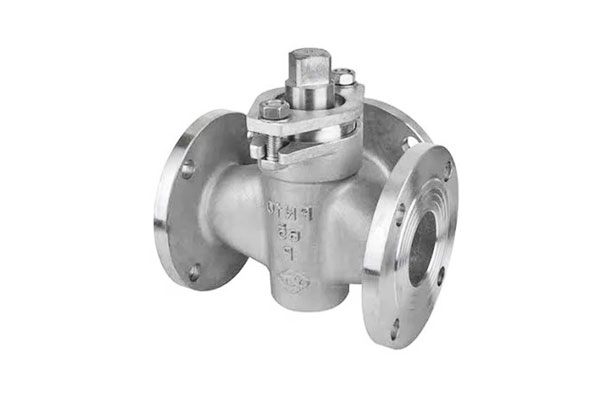
- Pono & Aila (Upstream, Midstream, Downstream)
- Kekau & Petrochemical Industry
- Wai & ʻO ka hana hoʻopau
- Mana pā'āʻu
- Pulp & Paper Industry
- Mining & Mineral Processing
- Hvac & Nā lawelawe lawelawe
- Meaʻai & Beverage Industry
- Marine & Offshore Engineering
- Ka Makani & Biotech Industry
- Lng & Cryogenic Systems
- Kukui Kekuhi & Metallurgical Plants
- E hōʻoluʻolu & Bulk Storage Terminals
- Textile & Dyeing Industry
- Pūnaehana Hōʻailona
7. Advantages and Limitations of Plug Valve
Advantages of Plug Valve
- Simple Design: Minimal internal components, making maintenance straightforward.
- Quick Operation: 90-degree quarter-turn allows fast open/close action.
- Tight Shutoff: Excellent sealing capability, especially with resilient seats or lubricant.
- Bidirectional Sealing: Seals effectively in both flow directions.
- Compact Size: Short face-to-face dimensions compared to gate or globe valves.
- Multi-Port Options: Available in 3-way or 4-way configurations for flow diversion or mixing.
- High Durability: Suitable for abrasive, Kuukuli, or slurry media (with appropriate materials).
- In-Line Maintenance: Many designs allow servicing without removing the valve from the pipeline.
Limitations of Plug Valve
- High Operating Torque: Especially in metal-seated or larger valves; may require gear or actuator.
- Friction Wear: Metal-to-metal designs can experience galling and wear over time.
- Lubrication Needs: Lubricated plug valve require periodic re-greasing to maintain sealing and ease of operation.
- Kālā: Can be more expensive than ball valves in similar pressure/temperature ranges.
- Limited Throttling: Not ideal for precise flow control due to potential erosion and wear in partially open positions.
- Size Constraints: Less common in sizes above 24 inches due to torque and manufacturing limits.
8. Hoʻohālikelike: Plug Valve vs. Ball, Gate, and Butterfly Valves
| Kālā | Plug Valve | Ball valve | ʻO ka haleʻo Valve | Butterfly Vy |
| Hoʻolālā | Simple body and tapered/cylindrical plug | Rotating spherical ball with bore | Rising wedge or parallel gate disc | Disc rotates on a central shaft |
| Ka hana | 90° quarter-turn | 90° quarter-turn | Multi-turn (slow) | 90° quarter-turn |
| Sealing Capability | Kūpono (especially lubricated types) | Maikaʻi loa (paʻa paʻa paʻa) | Maikaʻi loa (metal-to-metal contact) | Maikaʻi loa i ka maikaʻi (depends on seat design) |
| Ke kuahi o | Paʻa, not recommended | Paʻa (not ideal for throttling) | Acceptable for minimal control | Fair to good control depending on design |
| Torque Requirements | High, especially for larger valves | Loli | Low to high (depending on pressure/size) | Haʻahaʻa loa |
| Mālama | Loli (lubrication required for some types) | Hoʻohaʻahaʻa (minimal maintenance) | High (lole lole, stem packing) | Haʻahaʻa loa |
| Suitability for Slurry/Abrasive Media | Maikaʻi loa (especially with metal seats) | Ilihune (may clog or erode ball seat) | Kūpono | Fair to good with suitable disc materials |
| Multi-Port Options | ʻAe (3-way, 4-way) | ʻAe (limited 3-way availability) | ʻAʻole | ʻAʻole |
| Kaomiʻana | Haʻahaʻa loa (depends on port size) | Hoʻohaʻahaʻa (full bore design) | Hoʻohaʻahaʻa | Loli |
| Koi pono | Compact face-to-face, larger actuator for torque | Compact | Long face-to-face (vertical space needed) | Very compact |
| Kālā | Moderate to high (especially metal-seated) | Loli | Haʻahaʻa loa | Haʻahaʻa loa |
| Noi | Kekau, pono & aila, slurry, multi-directional flows | General use, wai, pono & aila, shutoff | Waterworks, isolation, non-frequent operation | Hvac, wai, low-pressure gas, large pipe diameters |
Hōʻaʻakeʻa:
- Use Plug Valves when you need tight shutoff, bidirectional sealing, or multi-port flow in tough services like slurries or chemicals.
- Nā Kūlana Pihi are ideal for fast shutoff and minimal pressure drop in clean media applications.
- Nā Valoko suit infrequent isolation in large-bore systems.
- Butterfly Valves excel in space-limited, low-pressure environments with large diameters.
9. Sizing, Selection & Installation Guidelines
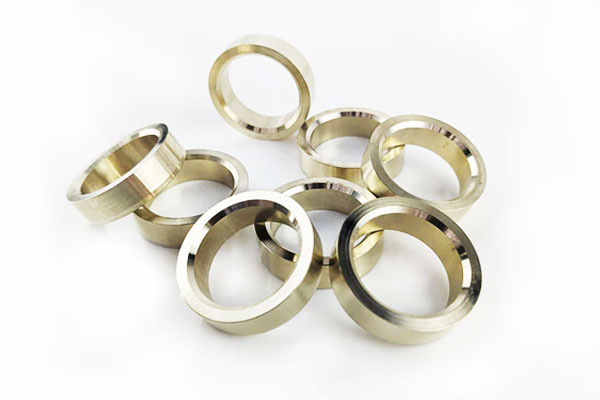
- Media and Conditions: Match body and seat materials to fluid chemistry, keka ao, a me ke kaumaha.
- Sizing: Use Cv calculations to ensure required flow at expected ΔP; select actuators to deliver 1.5× break‑away torque.
- Hoʻopiha: Orient plug vertically in lubricated valves to prevent grease pooling; maintain 1× valve length of straight pipe on each side for optimal performance.
10. Mālama, Nānā & Pilikia
- Lubrication: Every 6–12 months or 5,000 Nā Pāʻani Pūnaewele; use manufacturer‑approved grease.
- Seat Replacement: In many designs, seats can be changed in-line without body removal.
- Common Issues: Galling on metal seats remedied by relubrication; graphite packing leaks corrected by repacking; plug erosion addressed by Stellite overlays or seat refurbishment.
11. Kūlā, Certifications & Manaʻo
- Kii 599: Inspection and test procedures.
- Iso 17292: Performance requirements for plug, ball, and butterfly valves.
- MSS SP‑79/SP‑80: Guidelines for lubricated and non‑lubricated plug valves.
- Certifications: API Monogram, CE marking, SIL ratings for safety instrumented systems.
12. Hopena
Plug valves offer a unique blend of simplicity, wikiwiki, a kūmole across a diverse array of process industries.
By carefully selecting body, plug, and seat materials—and by adhering to best practices in sizing, hoʻopiha, and maintenance—engineers can leverage plug valves for reliable isolation, diversion, and rudimentary flow control in virtually any fluid service.
ʻO kēia: ʻO nā mea kūʻai aku kiʻekiʻe loa
ʻO kēia he mea lawelawe kūikawā no nā lawelawe kūʻai kūʻai, e hāʻawi ana i nā'āpana hana kiʻekiʻe no nāʻoihana e pono ai ke koi, Ke hoʻoikaika ikaika, a me ka pololei o ka dimensional.
Mai nā hale o nā mea hoʻokele i nā kino o nā kino machin, ʻO kēia Hāʻawi i nā hoʻololi o nā hopena hope e hoʻopau i nā hopena o nā mea e hoʻokō ai i nā kūlana honua olakino.

ʻO kā mākou Valve Casting Exptory:
Kāhaka kūʻai kūʻai for Valve Bodies & Trim
Hoʻohana i nāʻenehana casting was i hala e hana i nā geomet o nā geomet i loko o ka geomet.
Sand cread & Nā pāpale pīpī pale
Kūpono no ka medium i nā kino nui nui, flanges, a me nā bonnets-hāʻawi i kahi hopena kūpono-kūpono no nā noi pili pili, me ka aila & ʻO ka hanauna a me keʻano.
Ma ka hana pololei no ka bolve kūpono & Seal ingrity
Cnc iching of seats, KauwaiHua, a me nā hōʻailona hōʻailona e hōʻoia i kēlā me kēia'āpana i huiʻia a me nā koiʻana a me ka hōʻailonaʻana i nā pono hana.
Nā Kūlana Kūʻai no nā noi koʻikoʻi
Mai nā mea kanu lāʻau (CF8 / CF8m / CF3 / CF3M), Keihei, Ui, e duplex a me ke kiʻekiʻe-alyy, ʻO kēia hoʻolako i nā hale kūʻai kūʻai kūʻai i kūkuluʻia e hana i ka hoʻoponoponoʻana, ikaika nui, a iʻole nā wahi kiʻekiʻe kiʻekiʻe.
Whether you require custom-engineered control valves, nā valves vig, nā hua waina honua, Nā Valoko, a iʻole ka hana kiʻekiʻe o nā hale kūʻai kūʻai kūʻai, DEZE is your trusted partner no ka hemolele, durability, a me ka hōʻoia maikaʻi.
FaqS
When should I choose a plug valve over a ball valve?
Opt for nā valves vig in high‑temperature or abrasive services, or where simple quarter-turn, bidirectional operation is needed.
How often should a lubricated plug valve be re-lubricated?
Typically every 6–12 months or after 5,000–10,000 cycles, depending on service severity.
Can plug valves be used for throttling service?
Limited throttling is possible with equal‑percent plugs, but seat wear increases; globe valves excel at precise flow control.
What causes plug valve leakage and how is it fixed?
Wear or damage to seats and plugs leads to leakage; remedy via seat replacement, plug re-lapping, or re-lubrication for metal‑to‑metal valves.



